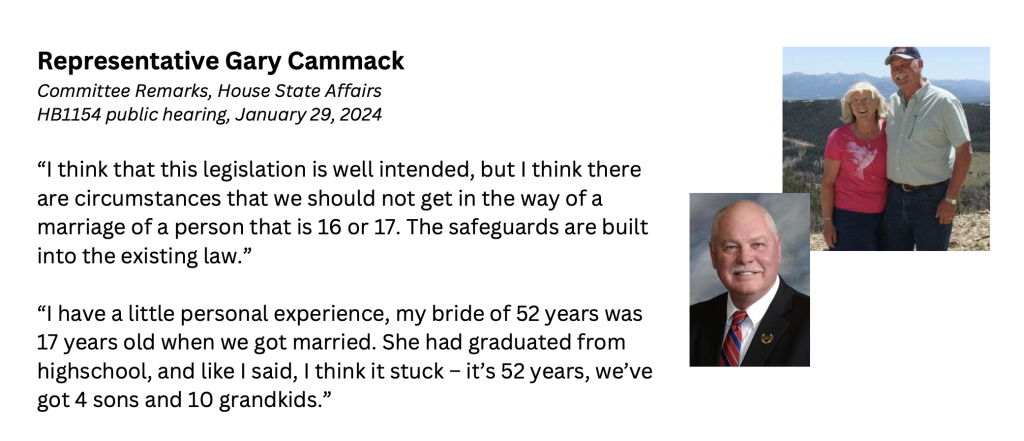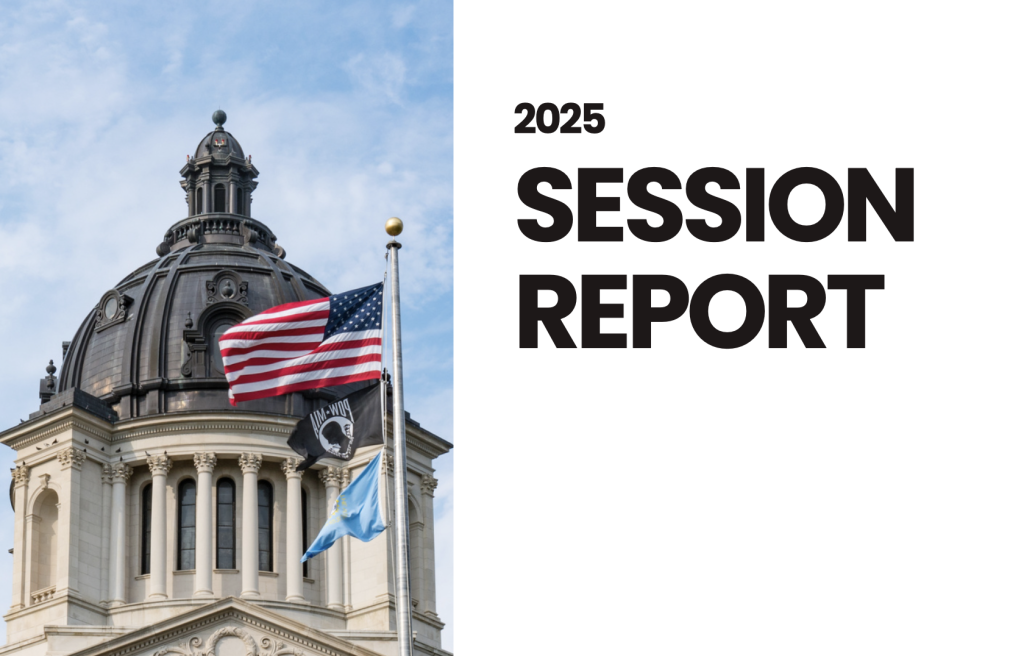Right now in South Dakota, someone who is 16 or 17 is able to get married if they have parental approval. A new piece of legislation has been introduced to prohibit these marriages, and raise the age to 18.
The legislation (SB156) has multiple problems:
• It assumes that getting married young is inherently problematic, rather than recognizing that many couples get married young and build successful marriages
• It potentially increases abortive tendencies, as lack of partner support/commitment is a common motivator for abortion
• It overrides the parents, and says “the state knows best”
• It leaves the age of consent at 16, which means that South Dakota law would officially be saying “You can hook up, but you can’t get married”
• It does nothing to catch abusers who could be caught if we implemented safeguards like other states (counseling requirements, meeting with a judge, etc)

…
Continue reading for full analysis, including:
• The disconnect between sex and marriage
• The failure to catch abusers
• The potential increase in abortive tendencies
• The prohibition of healthy marriages
• The outside influences pushing for the legislation
• The fundamental misunderstanding of the institution of marriage
…
The legislation disconnects sex and marriage
Our current age of consent in South Dakota is 16, which matches the age of possible marriage (assuming parental consent). Raising the marriage age to 18 while not amending the age of consent places the state law in the position of asserting that marriage and the sexual act are inherently not connected. In essence, as a matter of law, “You can hook up but you cannot get married.”
The legislation does not stop or catch abusers
The proponents of this marriage bill (SB156) have claimed that certain bad-actors are abusing the marriage laws for the purpose of abusing young girls. They make the claim that certain South Dakota parents are forcing their daughters into marriages with abusers, although no statistics or studies have been produced to prove this. If these situations are happening in South Dakota, we can all unite in the effort to stop the abuse, but does this marriage bill (SB156) stop the abuser? Does it catch the perpetrator? Unfortunately, no. It does nothing to stop these situations.
Marriage is not the problem – the abuser and their actions are. The underlying assumption behind this bill (SB156) is that if this type of marriage goes away, so does the problem of an abuser – this is not the case unfortunately. Those who wish to force a young girl into a bad situation will not become good people and change their ways – they will merely change the details of their plan.
Other states have implemented safeguards, “filters” if you will, to catch bad actors.
• California requires you to get approval from a judge
• Montana requires 2 counseling sessions and a meeting with a judicial officer
• Georgia prohibits more than a 4-year age gap
South Dakota has numerous options for putting “filters” in place to catch bad actors. We could require counseling (with mandatory reporting if abuse is suspected), we could require an interview with law enforcement or a judicial officer (individuals who would be trained in spotting abuse), we could implement an age-gap requirement, additional parental approval, or other options. Each of these would have a fighting chance at catching a perpetrator – SB156 simply requires the abuser to change their plan for abuse.
The legislation potentially increases abortive tendencies
The research on abortive tendencies is quite clear: The more supportive the father, the more likely the mother is to choose life. This study found that 60% of abortive women would have carried their baby and chosen life if they had received more support from the baby’s father.
In situations where a young couple is committed to each other, expecting a child, and have parental approval, the marriage commitment may be the best option for ensuring the mother and child have the support they need.
The Charlotte Lozier institute regularly produces statistical reports of abortion, and for South Dakota the married vs. non-married statistics are staggering.
Of the 2022 Abortions, 82% were by unmarried mothers, only 18% by married mothers.
Of the 2021 Abortions, 87% were by unmarried mothers, only 13% by married mothers.
Of the 2020 Abortions, 86% were by unmarried mothers, only 14% by married mothers.
Our society has created a new, middle age category between childhood and adulthood: adolescence. The idea that after childhood, and before adulthood, there is a period of irresponsibility. However, if a young man has committed to a relationship with a young woman, has engaged in physical relations with her and she is pregnant, he is not an adolescent, he is an expecting father.
The legislation prohibits marriages that would benefit both parties
There are numerous examples of couples getting married young, and building a healthy life together. Marriage is inherently a good thing, something that grows and matures you. Legislation like SB156 would prohibit these marriages.
Looking just to our legislative friends at the Capitol we find three stories of success – you can read their stories below.
The outside influences in support of the legislation include:
• The Gates Foundation
• American Atheists
• National Center for Lesbian Rights
• Reproductive Rights Coalition
• Faith & Reproductive Freedom Coalition
• Feminist Majority Foundation
• Freedom from Religion Foundation
…and more. For a full list and analysis of their arguments, click here.
The legislation misunderstands what marriage is
Whenever we seek to define something, like marriage or anything else, we must ask “What is it for?” And when making laws, “Why does the state have an interest in this question in the first place?”
What is marriage for?
At its core, the institution of marriage civilizes men, protects women, and provides the safest and most successful environment for the raising of children. This is what marriage does for society, and why our laws and culture hold the institution in high esteem.
Why does the state have an interest in marriage?
At its core, the state has an interest in marriage because it has an interest in children. Many conservative thinkers are asking questions about “getting the state out of it,” and removing all marriage laws because “It’s between me and God, not me and the state.” This mentality misses the point: the state is recognizing a union, and affirming its value – not creating or defining the union. State recognition of marriage serves children, and the state has a duty to protect the vulnerable.
SB156 assumes that marriage is just a piece of paper, and claims that the marriage is inherently harmful to young brides. The legislation fails to recognize that marriage is a stabilizing factor, a commitment that grows both parties, and a union that benefits children.







